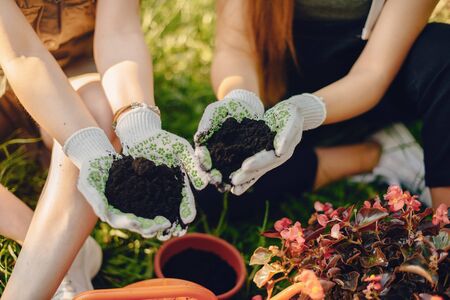Introduction: The Joy of Herbal Gardening in Indian Homes
India has a rich legacy of home gardening, where nurturing herbal plants is not just a pastime but a cherished family tradition. For generations, Indian households have grown tulsi (holy basil), mint, curry leaves, and other medicinal herbs right in their courtyards, balconies, or kitchen windowsills. These green corners are more than just sources of fresh ingredients—they are spaces where children learn about nature’s healing touch and elders reconnect with ancestral wisdom. The practice of growing herbal plants at home offers numerous benefits: it encourages sustainable living, provides easy access to safe and natural remedies, and strengthens family bonds as everyone participates in caring for the plants. Especially in homes with kids and elders, choosing the right herbal plants ensures safety while promoting well-being through natural means. Embracing this tradition not only honors India’s cultural heritage but also brings joy and health into daily life.
2. Understanding Safety: Key Considerations for Kids and Elders
When planning a herbal garden suitable for both children and elders in India, understanding safety is crucial. Indian households often include multi-generational members, so plant selection must consider allergies, toxicity, and practical everyday interactions. The tropical and subtropical climate across regions—from Delhi’s dry summers to Kerala’s humid monsoons—can also influence how certain herbs grow and how safe they remain during different seasons.
Common Allergies Associated with Herbal Plants
Some popular Indian herbs can trigger allergic reactions, especially in children who tend to touch or taste leaves out of curiosity. Elders may have sensitivities too, particularly those with respiratory issues. Below is a quick reference guide:
| Herb | Potential Allergen | Common Reaction | Precaution |
|---|---|---|---|
| Tulsi (Holy Basil) | Pollen | Sneezing, mild skin rash | Avoid direct inhalation of flowers; wash hands after handling |
| Mint (Pudina) | Essential oils | Skin irritation in rare cases | Supervise young kids when picking leaves |
| Coriander (Dhaniya) | Pollen & seeds | Allergic rhinitis | Harvest before flowering if allergies are known in family |
| Aloe Vera | Latex in sap | Mild stomach upset if ingested raw by kids | Teach children not to eat leaves directly from plant |
Toxicity Issues: What to Avoid in an Indian Home Garden
Certain plants commonly found in Indian gardens can be toxic if ingested or touched excessively. For example, Datura (Dhatura) and Oleander (Kaner) are sometimes grown for ornamental purposes but are highly poisonous. Always choose herbs that are non-toxic and safe for accidental contact.
Safe vs Unsafe Herbs: Quick Comparison Table
| Safe Herbs for All Ages | Herbs to Avoid with Kids/Elders |
|---|---|
| Tulsi, Curry Leaves, Mint, Coriander, Ajwain (Carom), Lemongrass | Datura, Oleander, Foxglove (rare but seen), Castor Bean Plant (Arandi) |
Practical Safety Tips for Every Day Gardening
- Plant Placement: Place delicate or potentially allergenic herbs at raised levels or in hanging pots to keep them away from toddlers’ reach.
- Regular Maintenance: Remove fallen leaves or flowers promptly as these can be tripped on or picked up by small children.
- Lifestyle Integration: In joint families where elders may rest outdoors, create shaded sitting areas away from herbs that attract bees or butterflies in excess.
- Supervision: Encourage supervised gardening sessions as a family activity to teach kids about safe plant handling using local languages and stories.
Cultural Note:
In many Indian homes, it is common to use neem twigs for brushing teeth or tulsi leaves for puja rituals. Reinforce the idea of “look but don’t chew” unless an adult gives permission, blending traditional knowledge with modern safety awareness for all ages.

3. Best Herbal Plants for Indian Gardens: Kid- and Elder-Friendly Choices
When planning a family-friendly herbal garden in India, it is essential to select plants that are not only safe but also culturally significant and easy to grow. Here are some highly recommended options:
Tulsi (Holy Basil)
Tulsi holds a special place in every Indian household, revered for its spiritual and medicinal properties. This plant is gentle enough for children and elders alike, supports respiratory health, and can be enjoyed as a herbal tea or simply chewed raw.
Mint (Pudina)
Mint is widely used in Indian kitchens for its refreshing aroma and digestive benefits. It grows quickly, requires minimal care, and can be safely consumed by all age groups. Kids especially enjoy mint in chutneys or summer drinks like nimbu-pani.
Coriander (Dhaniya)
Coriander leaves add vibrant flavor to countless Indian dishes. This herb is not only easy to grow at home but also packed with vitamins, making it suitable for young children and seniors who may have sensitive digestion.
Ajwain (Carom Seeds Plant)
Ajwain leaves are a traditional remedy for indigestion and coughs, commonly given to kids and elders in India. The plant thrives in pots or small garden spaces, and its leaves can be added to parathas or used as a soothing tea.
Lemongrass
Lemongrass is cherished for its citrusy fragrance and calming effects. A cup of lemongrass tea is often recommended for relaxation, making it ideal for both the young and old. Its hardy nature means it can flourish even in urban balconies or small terraces.
All these herbs are readily available across India, easy to maintain, and deeply rooted in the local culture. By including them in your home garden, you ensure a safe, engaging, and healthy environment for your entire family.
4. Essential Plant Care Tips: Nurturing Herbs in Indian Urban Spaces
Urban gardening in India is all about making the most of compact spaces, whether you live in a Mumbai apartment, a Bengaluru villa, or a Chennai chawl. With our hot summers and unpredictable monsoons, choosing low-maintenance practices ensures your herbal plants thrive safely for both kids and elders. Here are some practical tips tailored for Indian city homes:
Low-Maintenance Practices for Balconies and Terraces
- Container Selection: Use clay pots, recycled plastic bottles, or traditional earthen gamlas that offer good drainage. Place them where sunlight is abundant but not scorching—ideally 4-6 hours of filtered morning light.
- Soil Mix: Combine red soil, cocopeat, and organic compost in equal parts. This mix retains moisture while providing essential nutrients.
- Spacing: Keep small gaps between containers to ensure airflow and prevent fungal infections common in humid Indian climates.
Organic Composting Made Simple
Turn kitchen waste into black gold! Organic compost boosts herb growth and is safe for children and seniors. Here’s a basic method suitable for urban homes:
| Step | Description |
|---|---|
| Collect Waste | Gather vegetable peels, fruit scraps, tea leaves (avoid meat & oily food) |
| Add Dry Material | Add dry leaves or newspaper bits to balance moisture |
| Aerate Regularly | Stir mixture twice a week to provide oxygen |
| Mature & Use | After 30-45 days, use dark crumbly compost around herbal plants |
Water Conservation Techniques for Indian Homes
- Reuse Water: Collect leftover water from washing vegetables or rice and use it for watering herbs. Ensure no soap residue remains.
- Mulching: Cover soil with dried grass, coconut husk, or old saree pieces to reduce evaporation and maintain cool roots—a must during Indian summers!
- Drip Irrigation: DIY drip systems using old IV tubes or perforated bottles ensure slow and steady watering, perfect for working families.
Cultural Tip: Vastu-Friendly Placement
If you follow Vastu Shastra, place herbal pots in the east or north-east corner of your balcony or terrace to invite positive energy while nurturing healthful greens for your family.
5. Engaging the Family: Fun Gardening Activities and Learning
Gardening in India is not just about growing plants—it’s a beautiful way to bond generations, share traditions, and create lasting memories. Involving both kids and elders transforms gardening into an enriching family activity rooted in Indian culture.
Incorporate Traditional Indian Practices
Invite your elders to share their wisdom by teaching children about traditional herbal uses, such as how tulsi (holy basil) is used in daily prayers or neem leaves are employed for their medicinal properties. Let them recount stories behind these herbs, making the learning process enjoyable and meaningful for youngsters.
Celebrate Festivals with Herbal Themes
Connect gardening activities with Indian festivals. During Sankranti or Pongal, encourage kids to decorate plant pots with rangoli designs or sow new seeds as a symbol of growth and renewal. For Janmashtami, involve children in planting sacred herbs like tulsi around the home temple, tying the activity to spiritual traditions.
Daily Rituals That Nurture Plants and Family Bonds
Create daily routines where everyone takes part in caring for the garden. Assign age-appropriate tasks—kids can water plants or pick fresh mint leaves for chutney, while elders check soil health or guide on harvesting herbs. This regular interaction fosters responsibility and teamwork.
Learning Through Play and Curiosity
Turn gardening into a playful adventure! Organize treasure hunts for identifying different herbs or set up a ‘herb-of-the-week’ tasting session featuring local favourites like coriander or ajwain. Use simple tools made from recycled materials—such as coconut shells or clay diyas—for planting seeds, blending sustainability with fun.
Sharing Harvests and Stories
Finally, celebrate small harvests together by preparing traditional recipes using homegrown herbs—like pudina chutney or curry leaf rice. Encourage elders to share family stories linked to these dishes, helping kids appreciate their cultural heritage while enjoying the fruits of their labour.
6. Conclusion: Cultivating Wellness and Tradition Together
Herbal gardening in India is more than just a hobby—it is a way to nurture holistic health, pass on age-old traditions, and foster meaningful connections within the family. By carefully selecting safe herbal plants suitable for both kids and elders, Indian households can transform their home gardens into spaces of learning, healing, and togetherness. Whether you are growing tulsi for its sacred significance or mint for refreshing summer drinks, these plants weave wellness into daily life while keeping cultural roots alive. Introducing children to gardening helps them appreciate nature’s bounty and understand the values of sustainability and responsibility. For elders, tending to familiar herbs brings comfort, nostalgia, and gentle exercise. Ultimately, cultivating herbal gardens bridges generations, promotes well-being, and celebrates the vibrant heritage unique to Indian homes. Embrace this tradition—your kitchen garden can be a sanctuary where health and heritage grow side by side.

